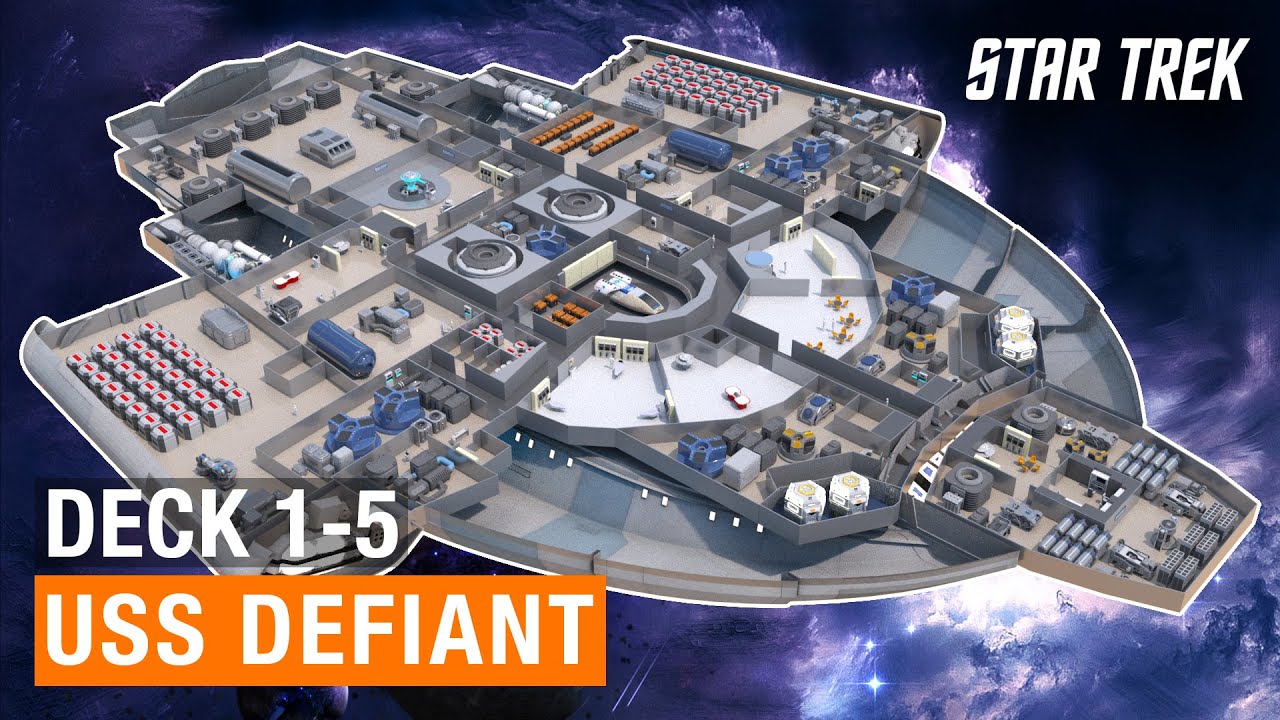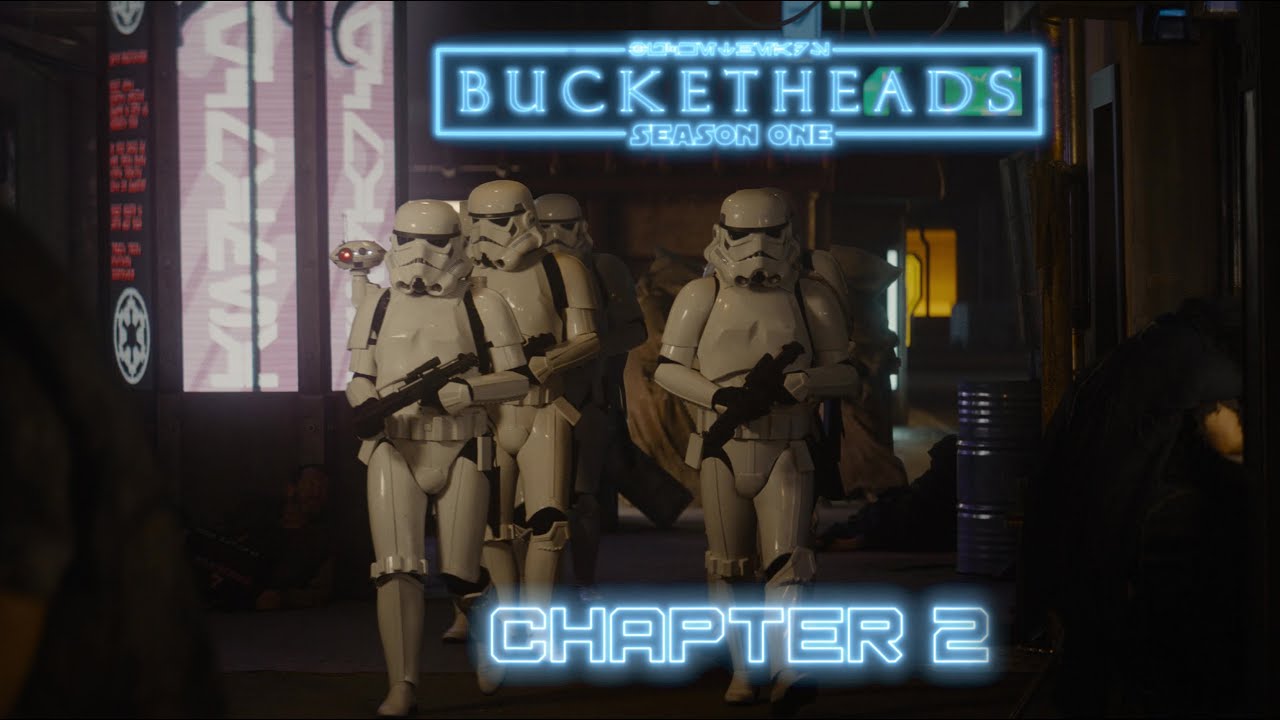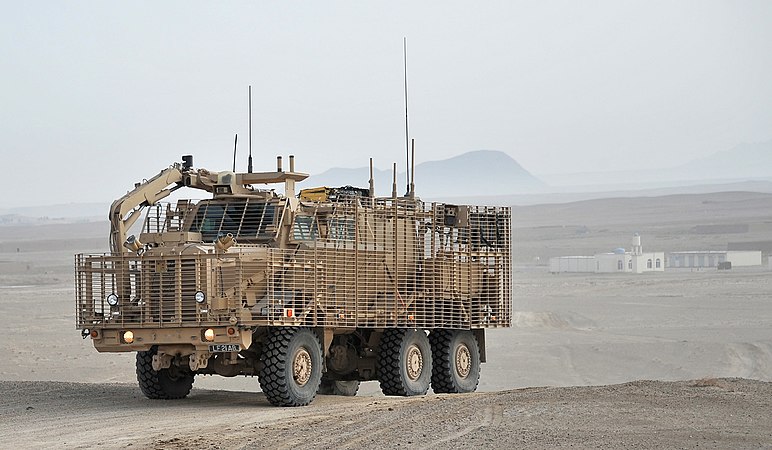You are using an out of date browser. It may not display this or other websites correctly.
You should upgrade or use an alternative browser.
You should upgrade or use an alternative browser.
Ship Design Philosophy
- Thread starter Condottiere
- Start date
MasterGwydion
Emperor Mongoose
Sigtrygg said:Any laser that can damage a Tigress can evaporate a fighter...
and that is the problem - oh look shiny thing...
That should always be true.
Condottiere
Emperor Mongoose
That would be the reflec coating.
Condottiere
Emperor Mongoose

Inspiration: Is the Gunstar a Better Design than the Starfury?
Spacedock delves into two of science fiction's more realistic space fighter designs.
https://www.youtube.com/watch?v=4Wl2xYU-c0g
It's all the same, only the names will change
Every day, it seems we're wastin' away
Another place where the faces are so cold
I'd drive all night just to get back home
I'm a cowboy
On a steel horse I ride
I'm wanted dead or alive
Condottiere
Emperor Mongoose

Spaceships: Carryalls
1. In theory, atmospheric craft.
2. Looks like fun, but I don't know if our airships could lift harvesters.
3. Alternatively, spaceship with docking clamp.
4. Since lifting power would likely be a matter of thrust tonnes versus volume of harvester.
Condottiere
Emperor Mongoose

Starwarships: Star Trek: Inside the USS Defiant Deck 1-5
The Defiant is a prototype warship stationed at Deep Space 9 that was in part designed by Commander Benjamin Sisko himself. It's the first ship built by Starfleet specifically for war, in light of a devastating defeat by the Borg. The Defiant is equipped with a Romulan cloaking device and ablative armor that can rapidly dissipate impact from energy weapon fire. After many missions, the Defiant was destroyed in 2375 during the Second Battle of Chin’toka in the DS9 episode “The Changing Face of Evil.”
Like all battleships, It had very few comforts and no provision for families, nor was it furnished for diplomatic missions.
It was, as its designers intended, a heavily armored, stripped-down vessel created as a "first strike vehicle for deployment in war.
https://www.youtube.com/watch?v=zRvTWJ2VVkk
Ironically, I recall building a Lego model with a similar concept when I was young, so this is basically what I'd describe as fan fiction.
I guess this can be termed, as far as that goes in Star Trek, as a pocket battleship.
Condottiere
Emperor Mongoose

Starwarships: Star Wars: The Evolution of the X-Wing
This is an animation on the evolution of the X-wing. The X-wing is one of the most well-balanced starfighters to ever exist in the Star Wars universe. The T-65 received legendary recognition throughout the galaxy for being the primary dogfighter to take on the Empire and win.
As the years went by, the x-wings went through several iterations and improvements.
While the X-Wing Starfighter had a very powerful shield, a repair robot, and an auxiliary life support system, The TIE Fighter has none of those things but can be mass-produced and cheaper to maintain.
Instead, the TIE Fighter pilot has to rely on his suit’s life support system during a fight.
It is also much more durable than the TIE Fighter. The X-Wing can take a number of hits because it was designed to fight a numerically superior enemy. It can lose a thruster and still be a hundred percent operational.
The Rebel Alliance built the X-Wing with quality in mind and not quantity. So the X-Wings naturally were designed to be much more durable than their Imperial counterparts.
https://www.youtube.com/watch?v=6jkemBRoL84
1. With the best will or the world, you can't go below a hundred tonnes for interstellar travel.
2. And a seven tonne jump drive.
3. The ratio might work if the pilot was a Zentraedi.
4. You could incorporate an automated low berth into the cockpit, though considering the size increase, would be considered a bridge.
Condottiere
Emperor Mongoose
Spaceships: Accommodations and Double Cockpits
1. Double cockpit has a nominal forty eight manhours of oxygen, or at least, human norm breathable air.
2. Costs fifteen kilostarbux and takes up one and a half tonnes.
3. As far as I can tell, has no life support costs.
4. Seven double cockpits take up ten and a half tonnes and cost one hundred and five kilostarbux.
5. That's a fortnight of life support for one default human, at no cost.
6. You could pull out the redundant electronics and controls, and sell them for spare parts.
1. Double cockpit has a nominal forty eight manhours of oxygen, or at least, human norm breathable air.
2. Costs fifteen kilostarbux and takes up one and a half tonnes.
3. As far as I can tell, has no life support costs.
4. Seven double cockpits take up ten and a half tonnes and cost one hundred and five kilostarbux.
5. That's a fortnight of life support for one default human, at no cost.
6. You could pull out the redundant electronics and controls, and sell them for spare parts.
Condottiere
Emperor Mongoose
Spaceships: Accommodations and Oxygen Candles: Providing Emergency Air
Oxygen candles are used as a backup source of breathable air in an emergency. In addition, they supply an on-demand source of oxygen, utilised in aeroplanes, space stations, and other applications such as safe havens and refuge chambers.
A safe supply of oxygen is critical to support life. We are dependent on oxygen for survival; our bodies consume it to produce energy. If primary oxygen sources are scarce, these generators are on standby, ready to produce a finite amount of oxygen via a chemical reaction.
How Oxygen Candles Work
Oxygen is produced from a thermal, chemical reaction. Oxygen candles house a mixture of sodium chlorate, barium peroxide and iron powder; the oxygen-producing chemical is sodium chlorate.
This chemical reaction requires a significant amount of energy input, hence the need for iron powder. Iron powder burns at a higher temperature around 600°C (1112°F); as it heats the iron becomes very hot and breaks down the sodium chlorate. This reaction produces oxygen, sodium chloride (common salt) and iron oxide through a process known as thermal decomposition.
The initial energy required to start the reaction occurs when a specific initiation mechanism, a brass starter, ignites the iron powder.
2Fe +3O2 -> 2Fe2O3
-> Heat
NaClO3 -> 3O2 +NaCl
Oxygen candles produce a lot of heat. Steps must be followed to ensure everyone’s safety, including the use of gloves and a strict no moving policy.
The candle supplied by MineARC Systems burns for approximately 60-90 minutes, producing 2600L of oxygen. This amount can provide approximately 20 hours of breathable air for four people. An oxygen candle cannot have its oxygen production regulated or halted and once ignited; it produces oxygen at a rate of approximately 28 Litres per minute until it is exhausted.
Why Have Oxygen Candles in Refuge Chambers?
Within refuge chambers, oxygen candles are an independent means source of respirable air while preparations for rescue are made. In the rare event the primary and secondary oxygen supplies fail, the candles are a viable backup.
The primary sources of breathable air within a refuge chamber are:
Compressed Air: Compressed air is simply the atmospheric “air” being pushed through pipelines down to the refuge chamber via a compressor. Before compressed air can be considered suitable for breathing, airborne water particles, dust, oil contaminants, and pollutants such as carbon monoxide and hydrocarbons from diesel exhausts need to be filtered.
Oxygen Cylinders: Oxygen cylinders reintroduce oxygen into the refuge chamber at the rate it is being consumed. Compressed oxygen is released from a cylinder into the chamber through a regulator that controls the flow rate. Flow is set at the rate of occupant consumption. Oxygen cylinders are used in the event compressed air fails and generally require the support of a scrubbing system to remove carbon dioxide and carbon monoxide from the air.
A candle is an entirely independent source of oxygen from within the refuge chamber. In this way, it’s isolated from common faults found in the other sources:
Compressed Air: The feed can often be compromised during an emergency due to damage to the circuit or carbon monoxide contamination requiring the chamber to be isolated.
Oxygen Cylinders: Leaks or tampering of the bottles is possible, impacting the cylinders’ effectiveness. Candles can’t leak or be tampered with without initiating the candle.
Oxygen Candle Risks
The risks associated with the candles is often feared without due cause. Oversaturation and fire hazards are two notable risks. The candles can enter a state of elevated oxygen (maximum 32%), classified as oxygen-enriched. However, the same fire ignition risks remain at these percentages, and no additional ignition risk is present. A severe fire hazard is present if the candles are mishandled, so strict safety guidelines are in place.
These candles are designed to be used in situations where there is a need for oxygen immediately and, therefore, worth the risk. This independent, compact and stable third source of oxygen is highly valuable from a MineARC perspective.
An oxygen candle is a device which produces oxygen when breathable air is scarce. Used as the last means of breathable air within a refuge chamber, they can produce enough oxygen to sustain life while waiting for rescue. Oxygen candles are reliable, relatively safe, and can last for long periods without decreasing its oxygen production.
https://minearc.com/oxygen-candles-providing-emergency-air/
Oxygen candles are used as a backup source of breathable air in an emergency. In addition, they supply an on-demand source of oxygen, utilised in aeroplanes, space stations, and other applications such as safe havens and refuge chambers.
A safe supply of oxygen is critical to support life. We are dependent on oxygen for survival; our bodies consume it to produce energy. If primary oxygen sources are scarce, these generators are on standby, ready to produce a finite amount of oxygen via a chemical reaction.
How Oxygen Candles Work
Oxygen is produced from a thermal, chemical reaction. Oxygen candles house a mixture of sodium chlorate, barium peroxide and iron powder; the oxygen-producing chemical is sodium chlorate.
This chemical reaction requires a significant amount of energy input, hence the need for iron powder. Iron powder burns at a higher temperature around 600°C (1112°F); as it heats the iron becomes very hot and breaks down the sodium chlorate. This reaction produces oxygen, sodium chloride (common salt) and iron oxide through a process known as thermal decomposition.
The initial energy required to start the reaction occurs when a specific initiation mechanism, a brass starter, ignites the iron powder.
2Fe +3O2 -> 2Fe2O3
-> Heat
NaClO3 -> 3O2 +NaCl
Oxygen candles produce a lot of heat. Steps must be followed to ensure everyone’s safety, including the use of gloves and a strict no moving policy.
The candle supplied by MineARC Systems burns for approximately 60-90 minutes, producing 2600L of oxygen. This amount can provide approximately 20 hours of breathable air for four people. An oxygen candle cannot have its oxygen production regulated or halted and once ignited; it produces oxygen at a rate of approximately 28 Litres per minute until it is exhausted.
Why Have Oxygen Candles in Refuge Chambers?
Within refuge chambers, oxygen candles are an independent means source of respirable air while preparations for rescue are made. In the rare event the primary and secondary oxygen supplies fail, the candles are a viable backup.
The primary sources of breathable air within a refuge chamber are:
Compressed Air: Compressed air is simply the atmospheric “air” being pushed through pipelines down to the refuge chamber via a compressor. Before compressed air can be considered suitable for breathing, airborne water particles, dust, oil contaminants, and pollutants such as carbon monoxide and hydrocarbons from diesel exhausts need to be filtered.
Oxygen Cylinders: Oxygen cylinders reintroduce oxygen into the refuge chamber at the rate it is being consumed. Compressed oxygen is released from a cylinder into the chamber through a regulator that controls the flow rate. Flow is set at the rate of occupant consumption. Oxygen cylinders are used in the event compressed air fails and generally require the support of a scrubbing system to remove carbon dioxide and carbon monoxide from the air.
A candle is an entirely independent source of oxygen from within the refuge chamber. In this way, it’s isolated from common faults found in the other sources:
Compressed Air: The feed can often be compromised during an emergency due to damage to the circuit or carbon monoxide contamination requiring the chamber to be isolated.
Oxygen Cylinders: Leaks or tampering of the bottles is possible, impacting the cylinders’ effectiveness. Candles can’t leak or be tampered with without initiating the candle.
Oxygen Candle Risks
The risks associated with the candles is often feared without due cause. Oversaturation and fire hazards are two notable risks. The candles can enter a state of elevated oxygen (maximum 32%), classified as oxygen-enriched. However, the same fire ignition risks remain at these percentages, and no additional ignition risk is present. A severe fire hazard is present if the candles are mishandled, so strict safety guidelines are in place.
These candles are designed to be used in situations where there is a need for oxygen immediately and, therefore, worth the risk. This independent, compact and stable third source of oxygen is highly valuable from a MineARC perspective.
An oxygen candle is a device which produces oxygen when breathable air is scarce. Used as the last means of breathable air within a refuge chamber, they can produce enough oxygen to sustain life while waiting for rescue. Oxygen candles are reliable, relatively safe, and can last for long periods without decreasing its oxygen production.
https://minearc.com/oxygen-candles-providing-emergency-air/
Condottiere
Emperor Mongoose
Spaceships: Accommodations and Oxygen candle
A chlorate candle, or an oxygen candle, is a cylindrical chemical oxygen generator that contains a mix of sodium chlorate and iron powder, which when ignited smolders at about 600 °C (1,112 °F), producing sodium chloride, iron oxide, and at a fixed rate of about 6.5 man-hours of oxygen per kilogram of the mixture. The mixture has an indefinite shelf life if stored properly: candles have been stored for 20 years without decreased oxygen output. Thermal decomposition releases the oxygen. The burning iron supplies the heat. The candle must be wrapped in thermal insulation to maintain the reaction temperature and to protect surrounding equipment. The key reaction is:[6]
2 NaClO3 → 2 NaCl + 3 O2
Potassium and lithium chlorate, and sodium, potassium and lithium perchlorates can also be used in oxygen candles.
An explosion caused by one of these candles killed two Royal Navy sailors on HMS Tireless (S88), a nuclear-powered submarine, under the Arctic on 21 March 2007.[7] The candle had become contaminated with hydraulic oil, which caused the mixture to explode rather than burn.[8]
In the Vika oxygen generator used on some spacecraft, lithium perchlorate is the source of oxygen. At 400 °C, it releases 60% of its weight as oxygen:[9]
LiClO4 → LiCl + 2 O2
A chlorate candle, or an oxygen candle, is a cylindrical chemical oxygen generator that contains a mix of sodium chlorate and iron powder, which when ignited smolders at about 600 °C (1,112 °F), producing sodium chloride, iron oxide, and at a fixed rate of about 6.5 man-hours of oxygen per kilogram of the mixture. The mixture has an indefinite shelf life if stored properly: candles have been stored for 20 years without decreased oxygen output. Thermal decomposition releases the oxygen. The burning iron supplies the heat. The candle must be wrapped in thermal insulation to maintain the reaction temperature and to protect surrounding equipment. The key reaction is:[6]
2 NaClO3 → 2 NaCl + 3 O2
Potassium and lithium chlorate, and sodium, potassium and lithium perchlorates can also be used in oxygen candles.
An explosion caused by one of these candles killed two Royal Navy sailors on HMS Tireless (S88), a nuclear-powered submarine, under the Arctic on 21 March 2007.[7] The candle had become contaminated with hydraulic oil, which caused the mixture to explode rather than burn.[8]
In the Vika oxygen generator used on some spacecraft, lithium perchlorate is the source of oxygen. At 400 °C, it releases 60% of its weight as oxygen:[9]
LiClO4 → LiCl + 2 O2
Condottiere
Emperor Mongoose

Inspiraton: Bucketheads: S1E1 "Ground Zero" - Prologue (Star Wars Fan Series)
Bucketheads - Season 1 is a #StarWars fan project that has been in the making for a long time and we're proud to present the Prologue of Episode 1! This wouldn't have been possible without the support from our Patrons and to keep this channel going we will need your continuous support. Don't forget to subscribe and hit the bell to be among the first to see the next chapter!
https://www.youtube.com/watch?v=8JyM4EU5JNs
Condottiere
Emperor Mongoose

Inspiration; Bucketheads: S1E1 "Ground Zero" - Chapter 2 (Star Wars Fan Series)
#Bucketheads - Season 1 is a #StarWars fan project that has been in the making for a long time and we're proud to present the second chapter of Episode 1! One more chapter will complete this first episode and will be screened in its entirety.
https://www.youtube.com/watch?v=oZc2Hh_VO80
Condottiere
Emperor Mongoose

Starwarships: Talking Starships With Drachinifel: Part 1 Attack Ships, Destroyers & Frigates
This week I'm Joined by the one and only Drachinifel and rather than his usual fare. We Discuss the ships of Star Trek looking for any Historical parallels between the ships of trek and their counterparts in Naval History. This Week we are looking at the smaller ships of Trek such as the Defiant, Saber, and Intrepid classes, among others. to see if these are mere makings of fiction, or if there is some logic to these designs?
Chapters:
intro 00:00
Setting the scene 1:50
Attack Ships=Torpedo boats 7:50
Heavy Birds of Prey: 14:20
Destroyers 19:20
Frigates 36:20
Modded Frigates 46:25
Sus Janeway 50:10
Modular Saucer Theory: 53:35
Outro 55:50
https://www.youtube.com/watch?v=Vz3HT3I7r0E
1. Torpedo craft will probably have a renaissance in High Guard 2.5.
2. You probably want gunboats going after torpedo craft.
3. Fuel is still an issue in Traveller.
4. Going by the crewing requirements, minimum five kilotonne hulls.
5. Battleships acting as tenders.
6. Breakaway hulls as lifeboats.
7. Big enough to be survivable, and return with friends.
8. How the hell do our carronades work?
Condottiere
Emperor Mongoose
Starships: Junks
A junk is a type of Chinese sailing ship with fully battened sails. There are two types of junk in China: the northern junk, which developed from Chinese river boats,[1]: 20 and southern junk, which developed from Austronesian ship designs used in trade with the Eastern Han dynasty since the 2nd century AD.[2]: 12–13 They continued to evolve in later dynasties, and were predominantly used by Chinese traders throughout Southeast Asia. Similar junk designs were also adopted by other East Asian countries, most notably Japan where junks were used as merchant ships to trade goods with China. They were found, and in lesser numbers are still found, throughout Southeast Asia and India, but primarily in China.[3] Historically, a Chinese junk could be one of many types of small coastal or river ships, usually serving as a cargo ship, pleasure boat, or houseboat, but also ranging in size up to large ocean-going vessel. Found more broadly today is a growing number of modern recreational junk-rigged sailboats. There can be significant regional variations in the type of rig or the layout of the vessel; however, they all employ fully battened sails ...
The historian Herbert Warington Smyth considered the junk as one of the most efficient ship designs, stating that "As an engine for carrying man and his commerce upon the high and stormy seas as well as on the vast inland waterways, it is doubtful if any class of vessel… is more suited or better adapted to its purpose than the Chinese or Indian junk, and it is certain that for flatness of sail and handiness, the Chinese rig is unsurpassed".[16] ...
Another characteristic of junks, interior compartments or bulkheads, strengthened the ship and slowed flooding in case of holing. Ships built in this manner were written of in Zhu Yu's book Pingzhou Table Talks, published by 1119 during the Song dynasty.[22] Again, this type of construction for Chinese ship hulls was attested to by the Moroccan Muslim Berber traveler Ibn Battuta (1304–1377 AD), who described it in great detail (refer to Technology of the Song dynasty).[23] ...
Benjamin Franklin wrote in a 1787 letter on the project of mail packets between the United States and France: As these vessels are not to be laden with goods, their holds may without inconvenience be divided into separate apartments, after the Chinese manner, and each of these apartments caulked tight so as to keep out water.
1. Solar panelling.
2. Extensively sub divided.
3. Likely monojumpers.
4. Solar panelling directly linked to manoeuvre drive.
5. Auxiliary battery pack likely.
6. Early fusion reactor for transitional power draw.
7. Jump junk; jumk.
A junk is a type of Chinese sailing ship with fully battened sails. There are two types of junk in China: the northern junk, which developed from Chinese river boats,[1]: 20 and southern junk, which developed from Austronesian ship designs used in trade with the Eastern Han dynasty since the 2nd century AD.[2]: 12–13 They continued to evolve in later dynasties, and were predominantly used by Chinese traders throughout Southeast Asia. Similar junk designs were also adopted by other East Asian countries, most notably Japan where junks were used as merchant ships to trade goods with China. They were found, and in lesser numbers are still found, throughout Southeast Asia and India, but primarily in China.[3] Historically, a Chinese junk could be one of many types of small coastal or river ships, usually serving as a cargo ship, pleasure boat, or houseboat, but also ranging in size up to large ocean-going vessel. Found more broadly today is a growing number of modern recreational junk-rigged sailboats. There can be significant regional variations in the type of rig or the layout of the vessel; however, they all employ fully battened sails ...
The historian Herbert Warington Smyth considered the junk as one of the most efficient ship designs, stating that "As an engine for carrying man and his commerce upon the high and stormy seas as well as on the vast inland waterways, it is doubtful if any class of vessel… is more suited or better adapted to its purpose than the Chinese or Indian junk, and it is certain that for flatness of sail and handiness, the Chinese rig is unsurpassed".[16] ...
Another characteristic of junks, interior compartments or bulkheads, strengthened the ship and slowed flooding in case of holing. Ships built in this manner were written of in Zhu Yu's book Pingzhou Table Talks, published by 1119 during the Song dynasty.[22] Again, this type of construction for Chinese ship hulls was attested to by the Moroccan Muslim Berber traveler Ibn Battuta (1304–1377 AD), who described it in great detail (refer to Technology of the Song dynasty).[23] ...
Benjamin Franklin wrote in a 1787 letter on the project of mail packets between the United States and France: As these vessels are not to be laden with goods, their holds may without inconvenience be divided into separate apartments, after the Chinese manner, and each of these apartments caulked tight so as to keep out water.
1. Solar panelling.
2. Extensively sub divided.
3. Likely monojumpers.
4. Solar panelling directly linked to manoeuvre drive.
5. Auxiliary battery pack likely.
6. Early fusion reactor for transitional power draw.
7. Jump junk; jumk.
Condottiere
Emperor Mongoose

Starwarships: Talking Starships With Drachinifel: Part 2 Cruisers and Monitors
This week me and @Drachinifel are back to have a short chat on the heavy hitters of Star Trek. The Cruisers! oh and the Moniters too i guess... comprising such a wide variety of ships From the Venerable K'tinga and Excelsior to the cutting edge Norway and Vorcha classes. With so many ships we've got a lot to talk about, so get comfy for this one...
https://www.youtube.com/watch?v=0mSlA7rAjW8
1. Expendable hulls.
2. Surplus weapon systems.
3. Protected cruiser third class, also know as colonial.
4. Unlikely to have spinal mount
5. Modular.
6. Armoured cruisers have durability.
7. Second class, independent cruise, willing to take on most opponents one on one.
8. Tugs.
9. Colonial cruisers - existential crisis.
Condottiere
Emperor Mongoose
Starwarships: Talking Starships with Drachinifel: Part 3 Battleships, Battlecruisers & Prometheus
This week i am joined one more time by @Drachinifel to look at the ships of Star Trek. This time we are looking at the largest ships of them all, The mighty Battleships, and their more agile Battlecruiser counterparts, as well as a little ship called the prometheus which is actually 3 ships...
All this and more in this Weeks video!
1. Breakaway hulls.
2. Matsushima class cruiser - spinal mount progenitor.
3. Now, I find the concept attractive, and I had my variant tagged as the Unicorn class, before I discovered that either the Japanese or the French had been there before me.
4. The two issues that would have to be dealt, well three, with are that the hull can the recoil, that the gun is accurate enough that only having a single main gun isn't a disadvantage, and that the rate of fire is increased to compensate as well.
5. Battlecruisers are probably harder to define in Star Trek.
6. Cruiser killer.
7. Inefficiency has to serve a strategic purpose, if not necessarily a tactical one.
8. Siege and/or blockade should at best be a secondary role for capital ships.
9. Galaxy class battleships disguised as cruise ships.
This week i am joined one more time by @Drachinifel to look at the ships of Star Trek. This time we are looking at the largest ships of them all, The mighty Battleships, and their more agile Battlecruiser counterparts, as well as a little ship called the prometheus which is actually 3 ships...
All this and more in this Weeks video!
1. Breakaway hulls.
2. Matsushima class cruiser - spinal mount progenitor.
3. Now, I find the concept attractive, and I had my variant tagged as the Unicorn class, before I discovered that either the Japanese or the French had been there before me.
4. The two issues that would have to be dealt, well three, with are that the hull can the recoil, that the gun is accurate enough that only having a single main gun isn't a disadvantage, and that the rate of fire is increased to compensate as well.
5. Battlecruisers are probably harder to define in Star Trek.
6. Cruiser killer.
7. Inefficiency has to serve a strategic purpose, if not necessarily a tactical one.
8. Siege and/or blockade should at best be a secondary role for capital ships.
9. Galaxy class battleships disguised as cruise ships.
Subzero001
Banded Mongoose
is there a write-up for "Coherent Superdense" armor in mongoose?
Last edited:
Condottiere
Emperor Mongoose
Maybe in July.
Though, off hand, I don't recall that particular hull armour combination.
Though, off hand, I don't recall that particular hull armour combination.
Condottiere
Emperor Mongoose

Spaceships: Hull and Slat Armour
Slat armor takes the form of a rigid slatted metal grid fitted around key sections of the vehicle, which disrupts the shaped charge of the warhead by either crushing it, preventing optimal detonation from occurring, or by damaging the fuzing mechanism, preventing detonation outright. Although slat armor is effective against incoming missiles, it does not offer complete protection – as many as 50% of missile impacts are unimpeded by the slat design.[1] Slat armor is more likely to be effective if the cage spacing is less than the diameter of the incoming RPG round, which is commonly 85 mm.[2]
Who knows?
Maybe that's why you have bomb pumped laser torpedoes.
Though, why not just use normal energy weapons, in that case.
Secondary purpose: external cargo racks.
Condottiere
Emperor Mongoose
Spacestations: Comet Ring Station | Stock + DLC KSP
Let's build a comet station and take it for a spin.
Outside of the weird propulsion arrangements in transporting the main components, the planetoid acts as an anchor for the rotating ring.
Though we all know it's just cheaper to drill a hole in it, and expand as necessary.
Let's build a comet station and take it for a spin.
Outside of the weird propulsion arrangements in transporting the main components, the planetoid acts as an anchor for the rotating ring.
Though we all know it's just cheaper to drill a hole in it, and expand as necessary.
Similar threads
- Replies
- 11
- Views
- 314
